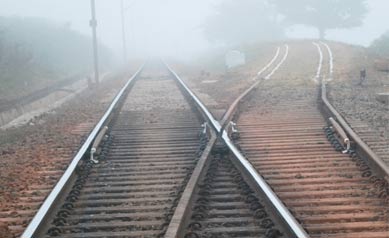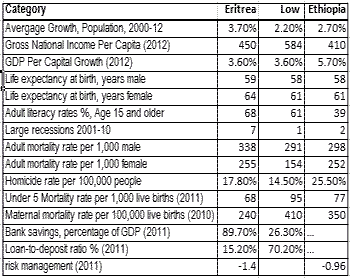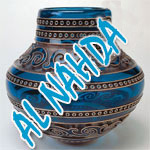Afro-Pessimism, Optimism, Realism And Eritrea

Much of the scholarship that deals with African development can be categorized as Afro-pessimist, Afro-optimist or Afro-realist. To-date, the case for pessimism had been easier to make: Africa is so far behind on nearly every metric, and it has been stuck there for so long, and it is growing at such lackluster rates, it is hard to envision when it will catch up. The case for optimism (usually tempered with the qualifier “cautious”) is made by professionals in the development field (World Economic Forum, just recently1 ) who have seen, since at least 2001, sub-Saharan Africa growing its GDP at an average of 5% per year, see infrastructures going up, Chinese investment/partnership replacing conditional foreign aid, and technological advances that can leapfrog Africa to at least South American living standards. Then there are the realists2 who argue that Africa is so poor that its data is unreliable because its surveys “systematically exaggerate development progress.” What they tell us about Eritrea’s governance; what those who argue they can govern the country better than the ruling party can glean from it (but won’t) and why, therefore, the silent majority is really silent is the subject of this article.
What’s odd about the Isaias Afwerki government is that it is more forthcoming with information to foreign entities than it is with its own citizens. There are two pieces of data that we will never get from the Eritrean government as it relates to its governance: budgets and census. A budget tells us a government’s priorities and a census tells us how it is distributing those priorities. I remember talking to a government official (one of the nicest I ever met, now presumed dead in prison) about Eritrea’s census: he essentially told me that the government does not trust us (the opposition) not to be completely irresponsible with the report. So something as fundamental as “how many of us Eritreans are out there in this world?” is still a secret and it is still being extrapolated from UN, EU, and US Census offices. Similarly, I was asking another official (now exiled) about the government’s secrecy with budgets and his response was: “Of course! Otherwise you would be poring over it and saying Adi Quntsi got more resources than Ad Seidna!” It is more comfortable giving the data to foreign technocrats specially on a sectoral basis. For example, the African Development Bank (AfDB) is trusted enough by the government to partner with it and provide it useful information it shares with nobody else3 .
The various country reports issued by various institutions (AfDB, UN, Transparency International, IMF, World Bank, etc) compare a country’s performance with its past performance; and they compare a country’s present performance with similarly situated countries. Aggregated, they are also, in my view, more reliable than anecdotes we all have heard of the “I was talking to my friend’s nephew…” variety, which often seem contradictory. Still, institutions are run by men and women who, depending on their relationship with the country being reported on, may introduce a level of subjectivity to what are supposed to be objective reports. AfDB has a relationship with the Eritrean government: its reports are sympathetic. The World Bank and IMF have no relationship at all with the Eritrean government–since 2008– and their reports tend to be cut-and-dry. Others, like Transparency International and Ibrahim Index of African Governance (IIAG) essentially use the UN and World Bank as their primary data source; they just aggregate it differently.
When it comes to economic reports and forecasts, perhaps the most influential is the World Bank. The institution uses various metrics–GDP in constant dollars, Gross National Income (GNI), Purchasing Power Parity (PPP) at national levels and, most importantly, at a per capita levels. To repeat: the significance of these reports is only to the extent that the same measures are being applied to a country to compare it against is former self and/or to compare it with a similarly situated country. Otherwise, if you want to have fun reading funny articles about how GDP measures all the wrong things, google it and you will be amused.
Three reports of the World Bank will be the subject of this column with a specific focus on Eritrea.
The first is the “Global Economic Prospects”,4 or GEP, which was published just this month. This is the report that got all the Afro-optimists to be optimistic: At 4.5%, sub-Saharan Africa’s GDP growth (in constant 2010 US dollars) was keeping pace with the developing countries. Of course, an Afro-pessimist can look at the same data and say that “developing countries” are made up of nations in (1) Europe and Central Asia, (2) Latin America and the Caribbean, (3) Middle East and North Africa, (4) Sub Saharan Africa, (5) South Asia, and (6) East Asia and the Pacific, and it is only because of the underperformance of Groups 1-3 that group 4 looks ok– but it is still behind Group 5 (5.5%), and Group 6 (6.9%.)
This brings us to Eritrea and Ethiopia:
 I think the Economist Intelligence Unit (EIU) owes us a lot of explanation because its forecast for 2013 and 2014 for Eritrea was significantly overstated. Or, more likely, it uses completely different measures.
I think the Economist Intelligence Unit (EIU) owes us a lot of explanation because its forecast for 2013 and 2014 for Eritrea was significantly overstated. Or, more likely, it uses completely different measures.
The second World Bank report came out last year. Entitled “Risk and Opportunity: Managing Risk for Development”5, the World Bank’s 362-page World Development Report 2014 encourages governments to take risks, but managed risks, to develop their countries. So, how is Eritrea doing and how does it compare with similarly situated countries and how does this contribute to the silence of the Silent Majority?
The World Bank divides up the globe into low income, lower middle income, upper middle income, and high income. Necessarily, the line between low income and lower middle income is arbitrary: a Gross National Income (GNI) of less than $1,035 per capita is low income; a dollar higher than that is lower middle income. In our neighborhood, Sudan is the only one that “graduated” to the lower middle income country; the rest are in the low income category–and Djibouti, for unknown reasons, doesn’t appear in the report.
The low income countries are, alphabetically, the following: Afghanistan, Bangladesh, Benin, Bukino Faso, Burundi, Cambodia, Central African Republic, Chad, Congo, Eritrea, Ethiopia, Guinea, Haiti, Kenya, Kyrgyz Republic, Liberia, Madagascar, Malawi, Mali, Monzambique, Myanmar, Nepal, Niger, Rwanda, Sierra Leone, Somalia, South Sudan, Tajkistan, Tanzania,Togo, Uganda and Zimbabwe.
I have used Eritrea as a pivot which is to say that on those metrics for which there is no data for Eritrea, I have not added it to the list. While many of the categories are self-explanatory and appear on many other reports like MDG and HDI, a few may be new to some readers and may require additional clarification particularly items 7, 8/9, 10, 13, 14 and 15. Definitions accompany the table which is for Eritrea in comparison to the average for the 32 Low Income countries, “Low” for short, as well as in comparison to Ethiopia. The average for “Low” includes data for Eritrea.
 Glossary
Glossary
Large Scale Recessions: 5% decline in GDP per capita growth from peak to trough.
Adult Mortality Rate: The probability of dying between the ages 15 and 60, if subject to the age specific mortality rates of that year between those ages.
Homicide Rate: Estimates of unlawful homicides purposely inflicted as a result of domestic disputes, interpersonal violence, violent conflicts over land resources, inter-gang violence over turf or control, and predatory violence and killing by armed groups. Intentional homicide does not include all intentional killing; the difference is usually in the organization of the killing. Individuals or small groups usually commit homicide, whereas killing in armed conflict is usually committed by fairly cohesive groups of up to several hundred members and is thus usually excluded.
Bank Savings:The sum of domestic demand, time, and savings deposits in deposit money banks, expressed as a share of GDP.
Loan-to-Deposit Ratio:The ratio of private credit by deposit money banks to the sum of domestic demand, time, and saving deposits in deposit money bank.
Governance Indicators: is the average of six indicators reflecting broad dimensions of governance (voice and accountability; political stability and absence of violence; government effectiveness; regulatory quality; rule of law; control of corruption). It ranges between -2.5 (least) to 2.5 (most).
That is a lot of useful data, with some surprises. If I were to draw a profile of Eritrea 2014, I would say:
The Eritrean womb is more fertile than the average low income country; a child born in Eritrea will have significantly higher than average probability of surviving to age 5, and the child’s mother will have a significantly lower than average probability of dying while or shortly after giving birth or aborting birth. The child will have a slightly higher than average chance of being literate. The child will have a higher than average (significantly higher for females) probability of dying between the ages of 15-60, and homicide will contribute at higher rates than average for low income country. The life of the Eritrean will be defined by economic instability, and a government not willing to extend credit to allow the person to take financial risks. The government will be defined by above-average corruption, lack of rule of law and ineffectiveness.
This is about right, except for what it leaves out: some that are measurable and some that are not. Of the measurable, in all the Millennium Development Goals (MDG) that Eritrea celebrates, it often leaves out two very telling pieces of data (and they don’t appear here either): one is the percentage of Eritreans who are famished (malnourishment reports are unlikely to be provided because Emperor Isaias Afwerki once gave a long tutorial on how the UN experts’ calculation of calorie intake is all wrong) and what percentage of Eritreans live in abject poverty ($1.25 a day.) The other is the under-performance of Eritrea’s education system, particularly for females. As this report6 by Professor Rena shows, Eritrean culture and the government’s policy of militarization conspire to depress the education attainment of Eritrean females. The gap between males and females is so extreme that if the National Union of Eritrean Women (NUEW) was an independent civil society (as opposed to a female franchise of PFDJ), it would be screaming for attention and a change in policy NOW.
More importantly, reports like that of the World Bank leave out (or, to be fair, can’t accurately capture such an intangible) a category that should be created: how terrified of the government are the citizens? And to what extent will they go to avoid its rule? And what kind of generational impact will this have on Eritrea?
The third report the World Bank issued is the “Ease of Doing Business” report7. As its name implies, the report assesses how easy it is to open and maintain a business in any country. It factors in: starting a business, dealing with construction permits, getting electricity, registering property, getting credit, protecting minority investors, paying taxes, access to borders, enforcing contracts, and resolving insolvency.
Eritrea ranks dead last in this report.
Now, looking at all these reports, how is it still possible for some Eritreans to still do the equivalent of “Je suis Isaias”? Why are we still hearing Nehna-Nsu? Why are there still Eritreans who may be repelled by the demonstrably disastrous policies of Isaias Afwerki but still refuse to count themselves within the ranks of the opposition? What are they prioritizing OVER citizen disappearances and lives wasted? Why are the overwhelming majority of Eritreans silent or semi-silent?
Rational People Make Rational Decisions
I think I have written a bit on this in the past: that most people are rational, and they make rational decisions. The overwhelming majority of awate readers are in the “silent majority.” The overwhelming majority of awate forum commenters are in the semi-silent majority. It’s simple and stark: despite the massive wrong being committed against the Eritrean people, we in the opposition are not willing to give up life’s comforts to fight it. Many of the loudest critics of the silent majority are themselves part of the semi-silent majority because they are not willing to give up another comfort, privacy, to stand up and be counted. There is nothing more hilarious than a person in the Diaspora, living a comfortable life, criticizing Eritreans in Eritrea or miserable refugee camps for not standing up to injustice–and doing it all while using a pen name.
Decision making–such as the decision to resist the tyranny of the Isaias Afwerki regime–is choosing between alternatives. To the silent majority, the opposition has been talking about irrelevant things, has rejected independence in favor of inter-dependence and has been appealing to the wrong king-makers, and it has presented itself as a worse alternative.
Relevance vs Irrelevance: Let’s first add some color to the profile of the average Eritrean we have presented above and it deals with a crucial demography: age. Over 60% of Eritrea’s population is under 25 years old, according to the African Development Bank. What this means is that some of what occupies the opposition literature–why do we have this flag? What did the ELF do to the EPLF and what did the EPLF do to the ELF? Remember Haile Selasse? Remember Derg–are subjects they can’t relate to. They can’t even relate to the G-15 or G-13. All that, to these Eritreans, is ancient history: we might as well be talking about Tripoli. What is relevant to them is that they are stuck in a perpetual militarization machine for reasons they don’t understand, and an education system that is broken, and job/career/entrepreneurship prospects that don’t exist, and a predatory government that sees their freedom–ability to speak, to write, to move around, to organize–as a mortal threat to its existence and abuses them relentlessly and forces them to exile by the tens of thousands.
Independence vs Interdependence:
Many people wrongly assume (or disingenuously claim) that the Eritrean revolution had no goal beyond Eritrean independence. But this is failure to read Eritrean revolutionary programs, particularly that of EPLF, which defined independence not just as a matter of an autonomous state, but as a guide for economic policy: one that charts an independent path irrespective of what the wishes of super-power and/or financial institutions are, one focused on social and economic justice and equitable development. While one can argue that this vision or its execution was disastrous (and it is), one can’t simultaneously argue that there was no vision. Suffice to say that almost all of the government’s messaging (including the president’s interviews) is directed at validating this vision of self-reliance. Suffice to also say that the people have formed opinions that this policy is either working (the Nehna Nsu constituency) or it is not working at all (the silent majority.)
The alternative vision presented by the opposition is one that stresses what is known as “interdependence” but, when you are weak and have nothing to give, “interdependence” is actually “total dependence.” The two entities the organized opposition and civil society have relied on are the pressure groups (human rights advocacy groups, journalists associations and internationalist organizations) and Ethiopia (to facilitate their organization and mobilization.) Suffice to say that the people have also formed opinions on this over the last 15 years: that this is necessary (the don’t-you-ever-ever-ever criticize the opposition activists) or it is not working at all and is toxic to our politics (the silent majority.)
Managed Pluralism vs Uncontrolled Pluralism:
The Isaias Afwerki government’s view of pluralism is the so-called “Hade hzbi Hade lbi” (One People, One Heart.) The argument is that while we as a people are diverse (language, ethnicity, origin, customs, religion) we all have a shared history that glues us as one. In this regard, all the things that make us different are regulated by the government (“equality of languages” as a policy, religious leaders appointed/fired by the government; customs showcased in national expos, and religious holidays “jointly” celebrated “at the national level.”) Suffice to say that people have also formed strong opinions on this policy: that it is either working (the Nehna-Nsu constituency) or it is not working at all and is actually quite dangerous for Eritrea as people feel that their identity is being suppressed. And they go searching for alternatives at the opposition….
The alternative version presented by the Opposition is a free-for-all pluralism. In this version of pluralism, every aspect of a person’s identity is equally sacred–language, ethnicity, region, religion, nationality–and can be used as a tool of mobilization and empowerment. And the empowerment can go all the way to the point of downplaying or even disowning Eritrean nationalism. And the silent majority looks at this and remains silent.
Conclusions
Ironically, the standards that the Eritrean government and the Eritrean opposition use to declare victory are remarkably similar. To the Eritrean government, the fact that it is still standing despite, according to it, massive and sustained campaigns against it by its enemies is proof of its success. To the Eritrean opposition organizations, the fact that they are still in existence despite massive and sustained campaigns against them by the Eritrean regime is proof of its success. They have set low expectations and congratulate themselves for exceeding it.
In politics, as we all know, a political organization is said to be successful when it wins the hearts and minds of the people and it is able to grow its ranks via voluntary members; it is self-sustaining based on the voluntary fees of its voluntary membership. To many Eritreans, the claim that Eritrea will soon disappear off the map of the earth, that it will be a failed state, that its population is in rapid decline is alarmist talk not supported by the facts. But also not supported by facts is the claim that Eritrea is making huge strides in development–given that it is mired in poverty, has anemic economic growth, and its education system and militarization has squandered the life of a generation of Eritreans.
The government’s policy of extreme self-reliance and pursuing a foreign policy disproportionate to its resources has isolated the country and denied it development partners. On the other hand, the opposition’s policy of extreme dependence on anybody but the Eritrean people–foreign NGOs and GOs–has stifled its growth. Our inability to sacrifice ourselves in proportion to the suffering of the Eritrean people–most of us are part-time strugglers and we always prioritize family, career, anonymity over the struggle–proves to the silent majority that we are not as serious as we claim we are.
The government’s “One People, One Heart” is subterfuge designed to eliminate all alternative power centers and authority figures to emerge independent of the blessing of the ruling party. It is neither original, not healthy: it’s the Marshal Tito plan for Yugoslavia: compulsory unity. On the other hand, the policy pursued by the Opposition–Free-for-all-Diversity, cannot create (given Eritrea’s demographics), the requisite critical mass to be an effective opposition force. It also induces anxiety and plays to the fears of people who believe that without the Crazy Glue of Isaias Afwerki holding the country together, it will spiral out of control.
The least-costly path for positive change is for Isaias Afwerki to resign from the PFDJ; for the PFDJ to change directions and go back to September 17, 2001: to release all political prisoners; to begin an orderly demobilization process; to implement the ratified constitution; to implement the “Draft Proclamation on the Formation of Political Parties and Organizations”8 as well as “Eritrean Electoral Law”9 and call for a National Reconciliation meeting. This is very unlikely to happen–almost in the category of the impossible.
The second-least costly path for positive change is a democratic-coup followed by all the steps outlined above. This is still unlikely, but not impossible.
The most costly path is the path we are on: a disjointed opposition that is unable (it is a feature; not a bug) to create a united front; one that refuses to temper its political programs to reflect nationalism, secularism and independence as its anchors; one that is not realistic enough to know that it cannot pursue the revolutionary “liberate the land, liberate the people” strategy of attrition (Happy Fenkel Day!); and is, therefore, one that has not come to grips with the fact that it will always have a secondary, supportive and, at best, influential role to the change that will come, whenever it comes, from Eritrea.
And that’s why the Silent Majority is silent. It looks at two tracks heading the wrong way. The Isaias Afwerki regime won’t do what is sensible; and the opposition won’t make strategic changes to force the Isaias Afwerki regime to be sensible or remove him. And the Eritrean people, over 60% of whom are under 25 and veterans of un-winnable wars, have no inclination to fight yet another un-winnable war–notwithstanding all the rabble-rousing from their semi-silent compatriots who refuse to give up life’s little comforts.
salyounis@gmail.com
1. “Views of Africa: Closing The Gap. BusinessReport. 20 Jan. 2015
2.“The Political Economy of Bad Data: Evidence from African Survey & Administrative Statistics – Working Paper 373.” Center For Global Development.
3. Eritrea: Interim Country Strategic Paper, Africa Development Bank Group: 2014-2016
4. World Bank Group. 2015. Global Economic Prospects, January 2015: Having Fiscal Space and Using It. Washington, DC: World Bank. doi: 10.1596/978-1-4648-0444-1. Li- cense: Creative Commons Attribution CC BY 3.0 IGO
5. World Bank. 2013. World Development Report 2014: Risk and Opportunity—Managing Risk for Development. Washington, DC: World Bank. doi: 10.1596/978-0-8213-9903–3. License: Creative Commons Attribution CC BY 3.0
6. Rena, R. (2008). Education in Eritrea: Developmental Challenges. International Journal of Scientific Research in Education, Vol. 1(1), 41-53. Retrieved 11 Nov 2014 from http://www.ijsre.com.
7.World Bank, 2014. Ease of Doing Business Rank.
8. Draft Proclamation on the Formation of Political Parties and Organizations
9. Draft Proclamation on Electoral Law



Awate Forum